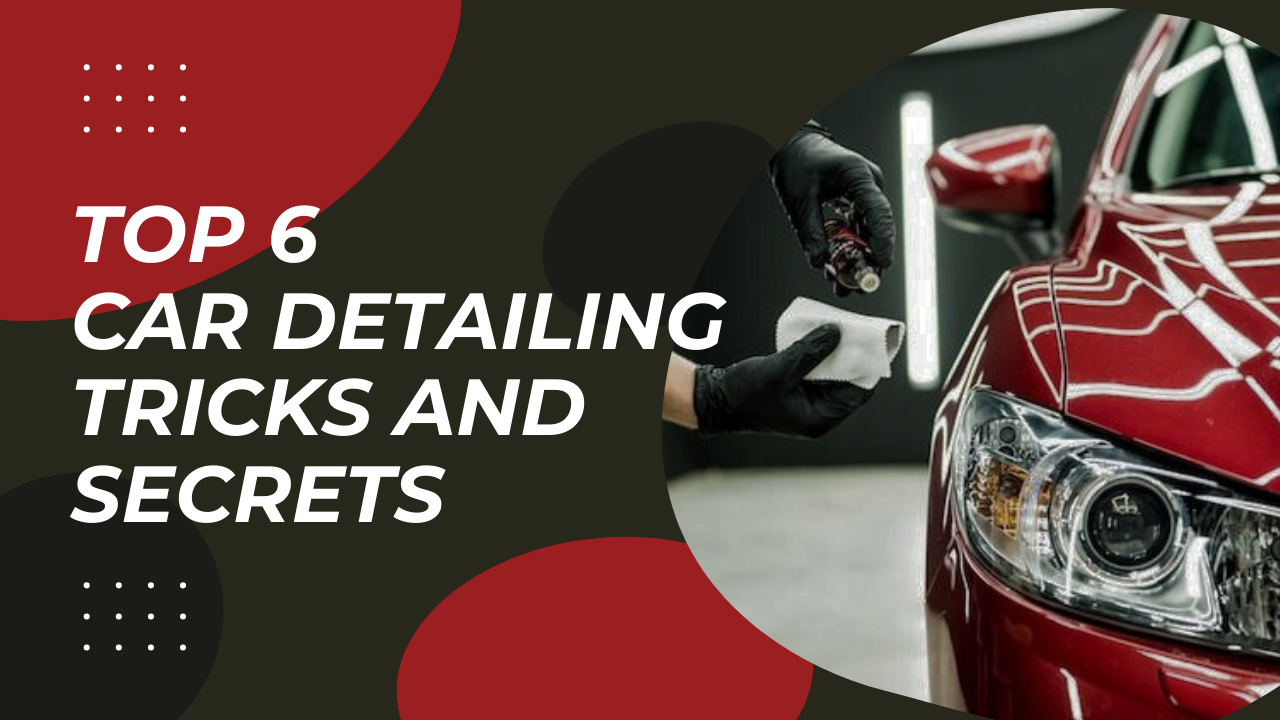One great way to preserve your car glint is though effective Car detailing. With the right detailing rudiments, you can effectively eliminate all potential spots and stains that may quicken your car wear. When a car is constantly well detailed, the upholstery is safeguarded, the exterior paint spark is preserved and the general car performance is enhanced. Detailing not only promote the durability of your car but even when, in the future, you desire to sell, you are sure to command a very attractive sum. There are a zillion number of professional working daily to develop newer car care products and more effective car detailing rudiments. These explorations have prompted positive results in enhancing clear coat finish thickness, applying adequate correctional anti-scratch techniques and in the development of dozen ground-breaking car detailing products. Irrespective of your level of experience and car care exposure, you will always come across one or two new tricks to try out. Below are 6 detailing tricks to observe.
- The Right Spot and Climate
It is easy for anyone to feel the need to wash a car and just find some random washing product and space to get the job done. However, when car detailing ideal conditions are not observed, there are potentials to leave swirl marks on the paintjob or residues that will become more problematic. The ideal time to wash a care is during cooler atmospheric conditions or, at least, under a well shaded spot. This will forestall the water cleaning product from evaporating too quickly and, most especially, promote better absorption of the wax to be applied afterward.
- Get Needed Tools and Products Ready
It is better to patronize professional car detailers. However, if you believe you can afford the time, it is advised that you ensure you have the right product and detailing tools at hand. For a thorough car washing and detailing, you will need brushes for your wheels, orbital to buff the paint, microfiber towel, vacuum, leather conditioner, carpet extractor, odour eliminator, chemicals and cleaning solutions like degreasers, tire bleach, sealants, glass cleaner, glaze, polish, soap and wax. In case of scratches, you will need a micro-fine sandpaper and for paint surface contamination, a detailing mitt will be needed.
- Guide Against Cross-Contamination.
There is always a potential for contaminant from one area to be introduced to another area, if you decide to use same detailing tools for every part. For instance, if you use same brush for both your wheels and bonnet, you run the risk of transferring abrasive dirt and grime from your wheels to the bonnet paint or even the rinse water. It is best to designate different materials for different purposes. The interior cleaning material must be separated from your exterior cleaning tools. This should include even the buckets, soap and other common cleaning equipment. Where you must use same cleaning tools, endeavour to properly raise and sanitize, before applying it to a different part of your car.
- Wash in Stages
The general rule of car detailing is to start from the wheels, move to the engine bay, and afterward, apply a top to bottom approach. Never try to engulf the entire vehicle in soap all at once. The soap will dry up quicker than required. Addressing the wheel first is essentially because the wheels and lower body panels carry the worst debris and dirt. These parts need selective attention. When you have finished cleaning the wheels, you may then, move to the engine bay and next, implement a top to bottom cleaning approach to forestall potentials for cross-contamination.
- While Yet Washing, Keep Panels Wet
As long as cleaning persists, it is wise to keep the entire soaped areas wet. The chemicals and cleaning products applied must not be allowed to dry up on their own volition. This will create worse spots on the affected area or even damage your car paint. Consequently, at interval, respray water on the car until you are ready to consciously get the vehicle dried up.
- Dry Consciously and Wax Up
After a thorough cleaning job has been completed, you need to raise the entire car again and then, using clean chamois or some quality microfiber towels to wipe the entire area until they become dry enough. Remember, cotton terry material is too coarse and can cause scratches and swirls on the surface.
In order to prevent potential contamination, you will, then, need to apply waxes and sealants. These serve to protect chemical contamination, repel water and protect against UV ray damages. You should also apply rubber dressing to your door seals and every other rubber components of your car, to maintain the sparks.
